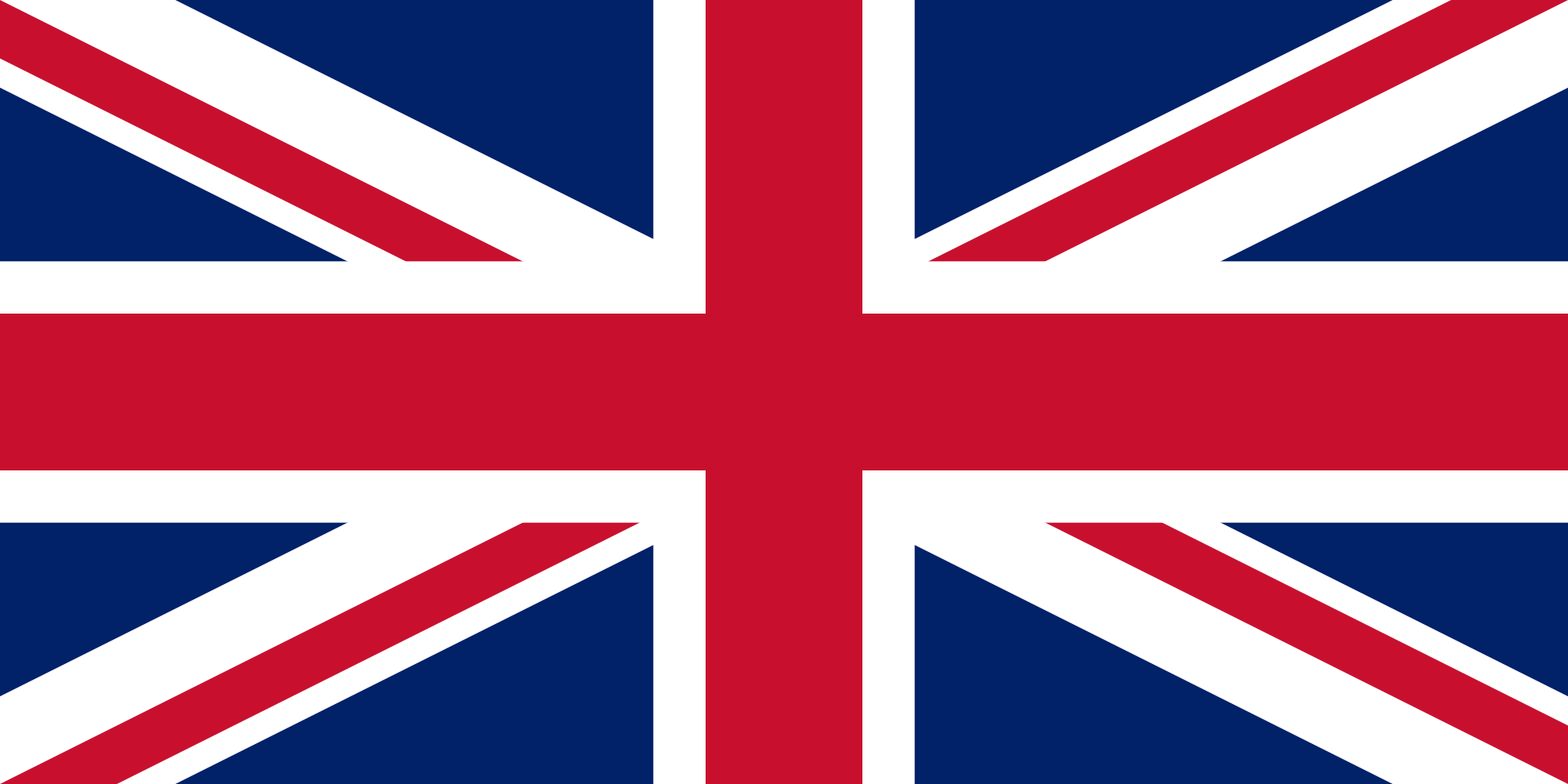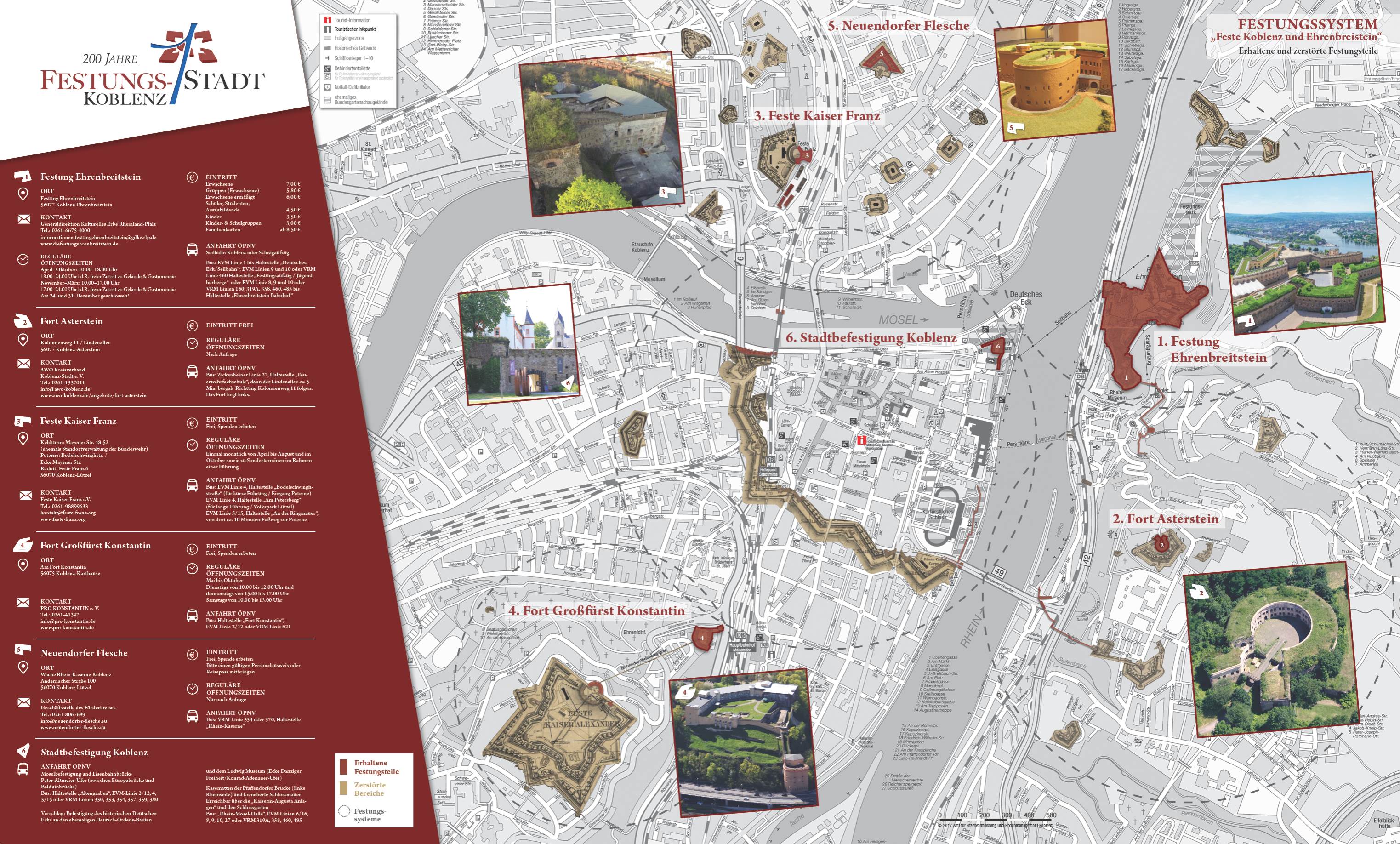Contact
Bahnhofplatz 7
Phone: +49 (0) 261 194 33
E-Mail
Website
FORTE CULTURA Flyer Fortified City of Koblenz
Experience World
Fortress Ehrenbreitstein
Surely not only because of the beautiful view was Ehrenbreitstein colonised 5000 years ago. Strategic thoughts and the hub of the waterways Rhine and Moselle were another reason for sure.
Fort (Feste) Kaiser Franz
On the Petersberg in today’s Coblenz area Lützel, the fortress Kaiser Franz was located as part of the large fortification Coblenz. It was built in 1822 to secure the Moselle bridge and was already 100 years later razed and partly blown up.
Fort Asterstein
As southern outpost of Ehrenbreitstein the fort was supposed to secure Ehrenbreitstein and Coblenz including the Rhine bridge.
Fort Kostantin
The fortress Grand Prince Konstantin was built on the Beatusberg, a former location of the Carthusian monastery from 1820. It was part of the systems fortress Kaiser Alexander within the fortress Coblenz. Besides fortress Ehrenbreitstein it is the only almost completely preserved fort in the system.
Fortress Kaiser Alexander
Originally the system fortress Kaiser Alexander was three times as big as the fortress Ehrenbreitstein. It included two batteries, one entrenchment, the fortress Großfürst Konstantin and the name giving main work fortress Kaiser Alexander.
Neuendorf Flèche
The Neuendorf flèche was built in 1825 in Coblenz-Lützel as part of the fortification system fortress Kaiser Franz. After the raze of the over ground fortification elements in 1910, the underground walkways can be visited today.
Work Klausenberg (Rheinburg)
East of Ehrenbreitstein the work Klausenberg was built from 1827 to 1833, also called Klausenbergturm. The caponier was equipped with cannon loopholes and a gun emplacement under the roof.
Tour Offers and Information
Ehrenbreitstein: Guided Tours & Living History
Discover interesting history in the fortress under the motto “tours and living history”, look over the shoulder of a gunsmith or solve thrilling criminal case on the “criminal-riddle-tour”.
Ehrenbreitstein for Kids
Whether ghostly fun, a hands on – experience area or the rallye “use your eyes!, the fortress Ehrenbreitstein has a great offer for family and kids. Even childrens’ birthdays can be celebrated in the state museum of the rock gate guard room.
Map
Monument and History
History Coblenz belongs to the oldest cities in Germany. Already 800.000 years ago, Stone Age men resided there. After todays' knowledge, the location was colonized from around 9.000 before Christ and around 1.000 before Christ developed to an important craft and trading center by the Celts.
Quelle: Koblenz Touristik Quelle: Matthäus Merian Quelle: Koblenz Touristik
Architecture The Prussian fortification Coblenz and Ehrenbreitstein was built from 1815 to 1834 and was the first defence facility of the kind large fortification of the 19th century. It consisted of:
Quelle: Koblenz Touristik Quelle: © DR Quelle: © DR
Nature Experience Fortress Coblenz and Ehrenbreitstein offer very divers nature experiences besides their defensive walls. There are great views from the fortress Ehrenbreitstein or the fort Konstantin over the city Coblenz and further away.
Quelle: © HR Quelle: © DR Quelle: © DR
Partner







